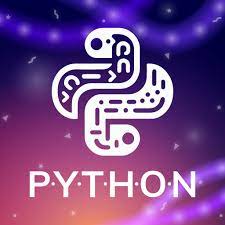Python Data Types and Data Structures for DevOps
 Sagar Bhosale
Sagar Bhosale
Enter Python, a versatile programming language that has captured the hearts of DevOps professionals worldwide. In this comprehensive guide, we’ll delve into the realm of Python data types and data structures and explore how they can empower DevOps practitioners to achieve new heights of productivity and innovation.
Data Types: The Building Blocks
Data types are the classification or categorization of data items. They represent the kind of value that tells us what operations can be performed on a particular data. Since everything is an object in Python programming, data types are actually classes, and variables are instances (objects) of these classes.
Here are the fundamental data types in Python:
Numeric: Deals with numbers—integers (
int) and floating-point numbers (float).Set: Represents an unordered collection of unique elements. Useful for tasks involving membership testing, removing duplicates, and performing mathematical set operations.
Boolean: Represents truth values (
TrueorFalse). Essential for decision-making and control flow.Mapping: Includes dictionaries (
dict), which allow you to store key-value pairs.Sequence: Includes strings (
str), lists (list), and tuples (tuple). These ordered collections allow indexing, slicing, and manipulation.
Data Structures: Organizing and Storing Data
Data structures are a way of organizing data so that it can be accessed more efficiently depending on the situation. Let’s explore the two main categories:
Primitive Data Structures:
These allow you to store only single data type values. Examples include integers, floats, strings, and Booleans.
They are simple and straightforward but lack flexibility.
Use cases: Basic calculations, flags, and constants.
Non-Primitive Data Structures:
These allow you to store multiple data type values. Examples include lists, sets, dictionaries, and stacks.
They are more versatile and powerful.
Use cases: Storing collections of related data, managing complex structures.
List, Tuple, and Set: A Comparison
Lists:
Ordered collections of items that can contain different data types.
Mutable (you can modify their contents).
Defined using square brackets (
[]).Example:
cloud_list = ["AWS", "Azure", "GCP", "Oracle"]
Tuples:
Similar to lists but immutable (cannot be modified after creation).
Defined using parentheses (
()).Example:
tuple_cloud_list = ("AWS", "Azure", "GCP", "Oracle")
Sets:
Unordered collections of unique elements.
Useful for membership testing and removing duplicates.
Defined using curly braces (
{}) or theset()function.Example:
cloud_set = {"AWS", "Azure", "GCP", "Oracle"}
Task: Create a Dictionary of Your Favorite DevOps Tools
fav_tools = {
"CI/CD": "Jenkins",
"Infrastructure as Code": "Terraform",
"Containerization": "Docker",
"Monitoring": "Prometheus",
"Configuration Management": "Ansible"
}
# Access your favorite tool
print(fav_tools["CI/CD"])
In conclusion, mastering Python data types and data structures is essential for any DevOps engineer. Whether you’re automating deployments, managing infrastructure, or analyzing logs, Python’s flexibility and rich ecosystem make it an invaluable tool.
Remember, Python is your Swiss Army knife—use it wisely, and may your DevOps journey be smooth and bug-free!
Subscribe to my newsletter
Read articles from Sagar Bhosale directly inside your inbox. Subscribe to the newsletter, and don't miss out.
Written by
